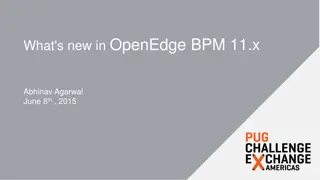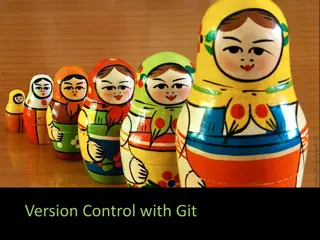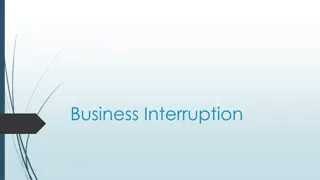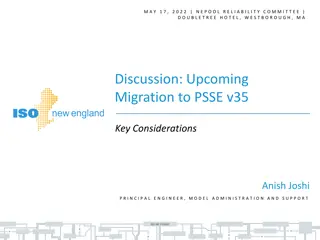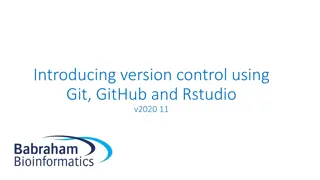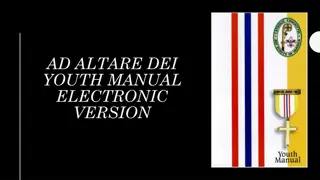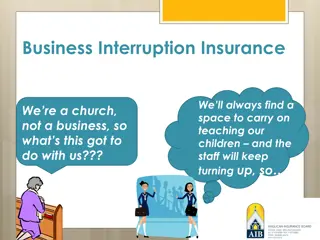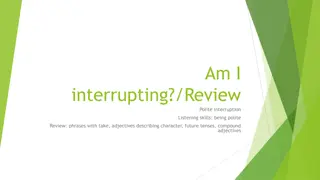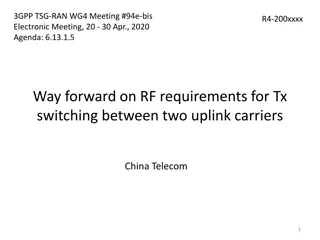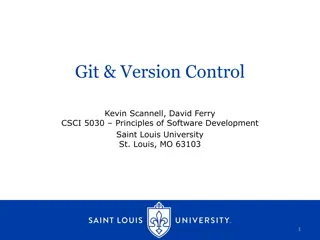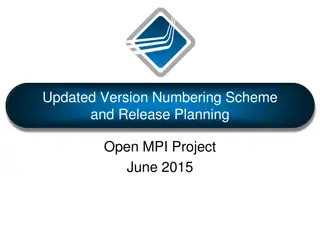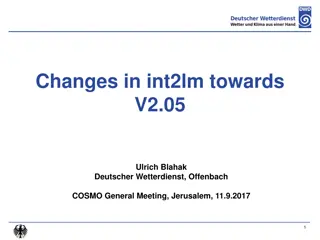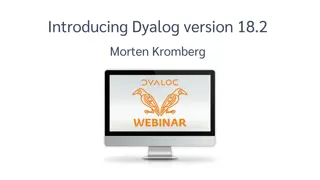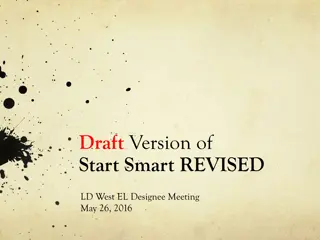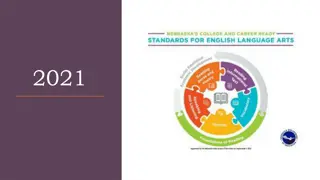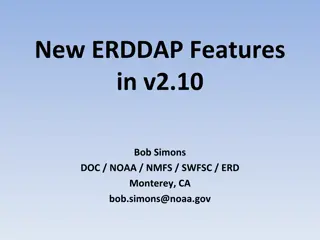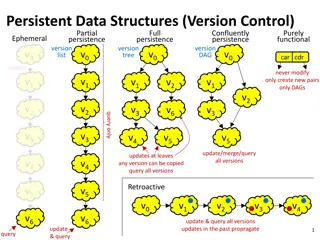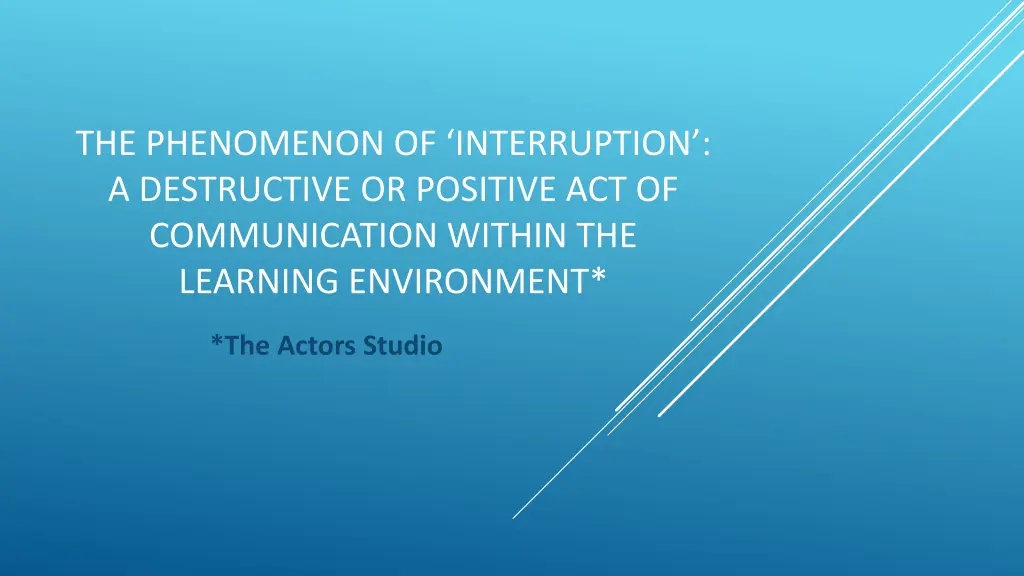
Understanding Interruption in Communication and Learning Environments
Explore the impact of interruptions in communication within the learning environment through ethnographic studies. Discover how cultural backgrounds influence conversational styles and the role of interruptions in fostering or hindering learning experiences. Reflect on the influence of digital technology, the importance of dialogue, and the call for control in educational settings.
Download Presentation

Please find below an Image/Link to download the presentation.
The content on the website is provided AS IS for your information and personal use only. It may not be sold, licensed, or shared on other websites without obtaining consent from the author. If you encounter any issues during the download, it is possible that the publisher has removed the file from their server.
You are allowed to download the files provided on this website for personal or commercial use, subject to the condition that they are used lawfully. All files are the property of their respective owners.
The content on the website is provided AS IS for your information and personal use only. It may not be sold, licensed, or shared on other websites without obtaining consent from the author.
E N D
Presentation Transcript
THE PHENOMENON OF INTERRUPTION: A DESTRUCTIVE OR POSITIVE ACT OF COMMUNICATION WITHIN THE LEARNING ENVIRONMENT* *The Actors Studio
The Interruption Culture in todays society Consideration and investigation of current ethnographic studies identifying the concept of social and cultural conversations. Intracultural Intercultural The nature of conversational interruptions and their impact upon the relationships between two, or more speakers. Intrusive and Cooperative [Dunne and Ng, 1994]
Discoveries from the secondary ethnographic research, regarding the nature of the engagement and response within conversation will inform the main point of the discussion. In terms of the ethnographic research I am hoping to discover that the cultural and social background of each speaker within the conversation will indicate the style of communication and so clarify interruption as a significant indication of awareness of self in addition to the concepts of being either intrusive or cooperative [Han Z. Li: 2001, p263].
Phenomenological study to discover the purpose of the question and answer and how conversation and dialogue is perceived. The point of the research to identify the concept of interruption and how it can either support or intrude upon the enquiry-led approach to learning as required by Ofsted, 2010, 2011. Qualitative methods used will be observational research and will include: Group interviews Discussions Participant observations Social experiments Meetings 1-2-1 interviews
THE FLIGHT FROM CONVERSATION [Turkle, 2014] Influence of digital technology on the art of conversation and communication within the social space and how this eventually impacts upon the learning environment.
The call for control Is this what the teacher or society wants of the teacher [Bingham, 2009]? How is this answered by the power of the conversation? Martin Buber s ideas on dialogue, presence and listening will have impact and bring some clarity to the discussions. In essence Buber believes that the art of listening plays an essential role in initiating many dialogues by creating a space in which two people can embrace each other as complete individuals
Biesta in his article Giving Teaching Back to Education proposes that Learning and teaching are different concepts [Biesta, 2012, p.36] How does this impact upon Learning and teaching, the value of conversation and indeed interruption? I believe that it all depends on an understanding of status between student and tutor and this is revealed in the exchange between ideas and conversational exchange within the learning environment.
Role of the teacher has to be understood within the learning process and then the positioning of the communication where the power exchange is greatest the conversation. Is the teacher To teach an agreed set of information as set out by external factors, exam boards To facilitate information and encourage To enable the student to learn from or be taught by This is the moment of crisis within the learning environment! WHY?
It is at this moment that the questions are asked and the communication begins. The dichotomy between learning from and being taught by is great and sensed by students. [Biesta, 2012, p42] As noted in the ethnographic study of potential conflicts in race and culture the classroom is a microcosm of that same world. The interactive element of the learning environment has the ability to be either intrusive or cooperative .
Subject Matter [conversation] Student Teacher TRIANGLE OF TEACHING [ALDRIDGE, 2013, P116]
Elements of conversation (depending on the supportive environment) might be as follows: Take the floor Conversational overlap Give a position of power to knowledge over peers Speaking up for yourself to identify yourself within the group Can t wait to speak (hands up) Argumentative
Observations to analyse the art of interruption and how to use it as a positive aspect of the teaching role. Teacher as facilitator? Teacher as the fount of all knowledge!
Prophets (teachers) never recognised in their own country Todd [2003] writes that Socrates in his teaching was like the perfect murderer who makes it appear that teaching has not taken place, who leaves the scene without a trace, and who, moreover, is convinced of his own innocence.

